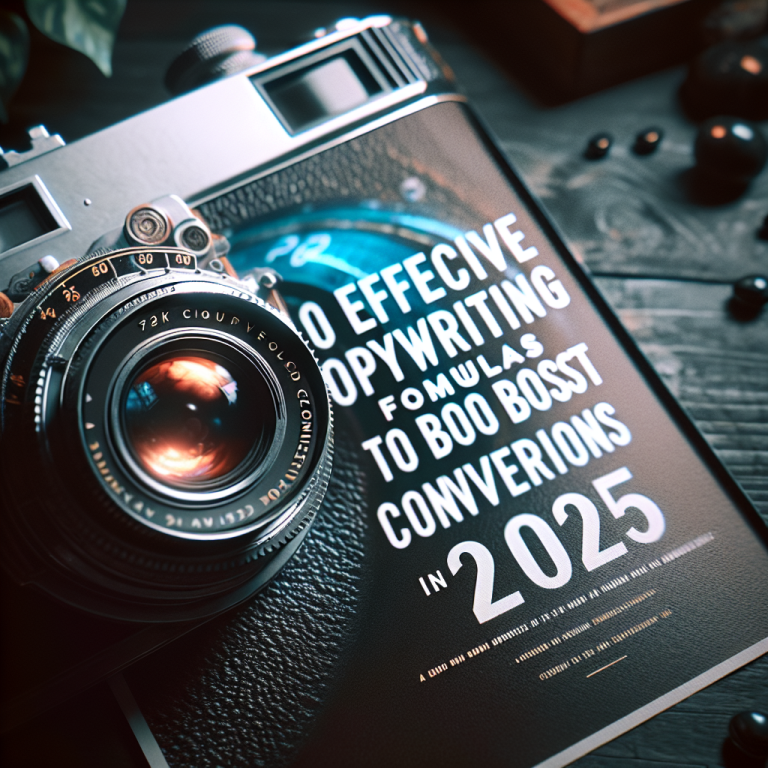The Ultimate Guide to Brand Positioning Through Language in 2025: 7 Effective Strategies to Boost Your Brand
Table of Contents
- 1. Developing a Personalized Brand Voice
- 2. Storytelling for Differentiation
- 3. Cultural Adaptation and Inclusivity
- 4. Visual Language Integration
- 5. Social Listening and Reactivity
- 6. Building Emotional Connections Through Language
- 7. Data-Driven Language Strategies
- FAQs
- Conclusion
1. Developing a Personalized Brand Voice
Understanding Your Brandâs Unique Tone
In 2025, one of the most impactful ways to master brand positioning through language is by developing a unique and consistent brand voice. Your brand voice should reflect your company’s personality, values, and mission. For example, brands like Elon Muskâs Tesla employ a futuristic and innovative tone that resonates with their audience.
Creating a distinctive voice helps to differentiate your brand in a crowded marketplace. The tone you chooseâwhether friendly, authoritative, playful, or professionalâsets the stage for all your communications. It enables your audience to recognize and relate to your brand effortlessly.
Pro tip: Conduct a thorough brand voice audit regularly to ensure consistency across all channels. Use customer feedback and social media interactions to refine your tone and language style, making your brand more relatable and memorable.
Aligning Language with Customer Expectations
In 2025, consumer expectations are higher than ever. Your language must align with your target audienceâs preferences to enhance brand positioning through language. For instance, younger audiences prefer casual, authentic communication, while B2B clients might prioritize professionalism and clarity.
Start by creating detailed buyer personas that specify language preferences, slang, jargon, and tone. Use these insights to tailor your messaging for each segment, enhancing engagement and brand loyalty.
Remember: Authenticity in your language fosters trust. If your messaging feels genuine and aligned with your audienceâs values, your brand will naturally occupy a stronger position in their minds.
2. Storytelling for Differentiation
The Power of Narrative in Brand Positioning
Storytelling is one of the most compelling tools for brand positioning through language. In 2025, brands that craft authentic stories can distinguish themselves amid fierce competition. Sharing your company’s origin, values, or customer success stories helps build an emotional connection.
Appleâs narrative around innovation and simplicity has helped position it as a premium, user-friendly brand. Use storytelling to highlight your unique value proposition and to connect emotionally with your audience.
Tip: Incorporate storytelling into every piece of communication, from website copy to social media posts. This consistent narrative reinforces your brand’s position as a leader or innovator in your industry.
Using Language to Convey Brand Personality
The language used during storytelling should mirror your brand personality, whether itâs playful, serious, adventurous, or trustworthy. This consistency helps reinforce your market position and makes your brand more memorable.
For example, Patagoniaâs storytelling around environmental activism positions it as an eco-conscious brand. Use vivid language that evokes imagery and emotions aligned with your brand values.
Actionable tip: Develop a set of brand storytelling guidelines to ensure every story, whether on your website or in ads, reflects your core messaging and brand voice effectively.
3. Cultural Adaptation and Inclusivity
Localization of Language for Global Markets
2025âs globalized economy demands that brands adapt their language to resonate locally. Localization involves translating not just words but also cultural nuances, idioms, and values. This practice boosts your brand positioning through language by demonstrating cultural sensitivity and relevance.
For example, McDonald’s uses localized menus and language in different countries to connect with local cultures. This strategy enhances brand loyalty by making customers feel understood and respected.
Pro tip: Invest in professional localization services and cultural research to tailor your messaging for each market. Avoid literal translationsâfocus on conveying your brandâs essence in culturally meaningful ways.
Promoting Inclusive Language
Inclusivity in language is no longer optional in 2025; itâs an expectation. Using inclusive language broadens your appeal, avoids alienation, and enhances your brandâs social impact. Ensure that your messaging respects diverse gender identities, cultures, and backgrounds.
For example, avoid gendered language where possible, and use neutral terms that are welcoming to all. Research shows that brands perceived as inclusive tend to foster stronger consumer trust and loyalty.
Implement an inclusive language checklist in your content creation process to make sure all communications promote diversity and equality, solidifying your positive brand position.
4. Visual Language Integration
Aligning Visuals with Verbal Messaging
In 2025, brand positioning through language extends into visual elements. The language your brand uses should be complemented by visual cuesâcolor schemes, typography, imageryâthat reinforce your message.
For example, a brand positioning itself as eco-friendly might use earthy colors and organic shapes, aligning visual language with verbal messaging. Consistent visuals strengthen recognition and reinforce your brand position.
Actionable tip: Regularly audit your visual identity to ensure it harmonizes with your language tone and messaging. Cohesion across all channels amplifies your brand presence.
Utilizing Infographics and Visual Content
Infographics and videos are highly effective tools for communicating complex messages quickly. Use visual language strategically to enhance understanding and retention.
In 2025, data-driven visuals can help establish authority and trust, especially when backed by credible data. Incorporate language that emphasizes clarity, transparency, and value.
Pro Tip: Use compelling calls to action in visuals with clear, persuasive language to guide consumer behavior and strengthen your brand positioning.
5. Social Listening and Reactivity
Monitoring Your Brandâs Online Voice
Effective brand positioning through language involves listening to what customers say about you online. Social listening tools help track brand mentions, sentiment, and trending topics.
For example, if your brand is seen as outdated, you can adapt your language to sound fresh and innovative, reversing negative perceptions. Reacting promptly to customer feedback shows that your brand values consumersâ opinions.
Action step: Implement regular social media audits and use insights to refine your messaging, positioning your brand as attentive and responsive.
Engaging in Real-Time Conversations
Being reactive on social channels can significantly boost your brandâs position. Brands successful in 2025 engage authentically, using language that is conversational and empathetic.
Case in point: Nikeâs timely responses to trending issues demonstrate a brand that listens and adapts. Use language that resonates, offers solutions, and shows genuine care.
Tip: Train your marketing team to craft thoughtful, on-brand responses, turning engagement into opportunities for positioning your brand as empathetic and customer-centric.
6. Building Emotional Connections Through Language
The Science of Emotional Branding
Emotions drive purchasing decisions. In 2025, using persuasive language that triggers emotional responses is vital for brand positioning through language. Stories that evoke joy, trust, or nostalgia foster strong brand loyalty.
Brands like Coca-Cola excel at this by emphasizing happiness and togetherness in their messaging. Incorporate emotional triggers into your brand language to strengthen consumer bonds.
Pro tip: Use descriptive, sensory language to create vivid mental images that connect emotionally with your audience.
Crafting Content That Resonates
Positively resonant content feels authentic and aligns with consumers’ core values. Remember, in 2025, transparency combined with relatable language enhances emotional bonds.
Use testimonials, storytelling, and user-generated content to amplify these emotional connections. When your audience feels understood and appreciated, your brand naturally gains a stronger market position.
Tip: Regularly review your content for emotional impact and adjust language accordingly to deepen connections.
7. Data-Driven Language Strategies
Leveraging Analytics for Better Messaging
Brand positioning through language in 2025 relies heavily on data. Analytics reveal what words, phrases, or themes resonate most with your audience. Use this data to optimize your messaging and tone.
Tools such as sentiment analysis and engagement metrics help you understand audience preferences and refine your language accordingly. For example, A/B testing different headlines can reveal which phrasing drives conversions more effectively.
Actionable tip: Invest in AI-powered content tools that analyze language performance and suggest improvements for maximum impact.
Personalization Through Data
Personalization remains king in 2025. Data allows brands to tailor language to individual consumer profiles, boosting relevance and strengthening brand positioning.
For instance, marketing automation platforms enable you to send personalized messages based on user behavior or preferences. This targeted communication enhances brand perception and loyalty.
Tip: Incorporate dynamic content capabilities into your website and email campaigns to deliver personalized, impactful language at scale.
Frequently Asked Questions
Q1: What is brand positioning through language?
It is the strategic use of language â tone, messaging, storytelling â to establish and reinforce how consumers perceive your brand in the market.
Q2: How can I improve my brand voice?
Conduct audits, gather customer feedback, and ensure consistency across all platforms. Focus on authenticity and aligning language with your brand values.
Q3: Why is cultural adaptation important in 2025?
Adapting your language to different cultural contexts helps avoid misunderstandings, demonstrates respect, and strengthens your global brand positioning.
Q4: How does data influence language strategies?
Data insights reveal what resonates with your audience, allowing you to optimize your messaging for better engagement and market positioning.
Q5: What is an example of effective storytelling?
Brands like Patagonia use storytelling to communicate their values around environmental activism, creating an emotional bond that enhances their market position.
Conclusion
In 2025, mastering brand positioning through language is essential for standing out in a competitive marketplace. By developing a personalized voice, leveraging storytelling, adapting culturally, and utilizing data, your brand can create meaningful connections that elevate its position. Remember, your language shapes perceptions, influences emotions, and drives loyalty. Stay intentional and innovative with your communication strategies to thrive in 2025 and beyond.









